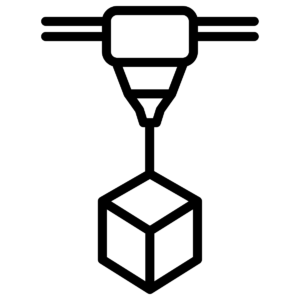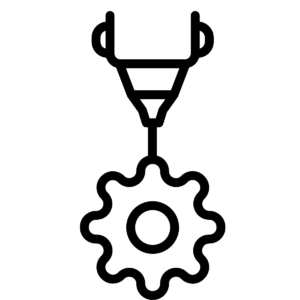What is 4D Printing?
4D printing is a new and innovative form of additive manufacturing technology that takes traditional 3D printing to a whole new level. The technology uses smart materials and sophisticated digital designs to create objects or structures that can change shape over time or adapt themselves in some way to perform a specific function post-production in response to specific stimuli, such as temperature, moisture, or light. Imagine, as a rather simplistic example, a 3D flat board that curls up into a chair if say water, or light is applied to it. It is mind blowing stuff with seemingly limitless applications across a wide range of industries. Let’s look at just some of innovative ways this exciting technology could or in some cases is already being used.

Manufacturing
4D printing has the potential to radically change just about any manufacturing process. The technology can remove the need for a mould or a tool to create an object which can be time-consuming and expensive and instead produce custom objects directly from a digital model. This speeds up the whole manufacturing process and means that objects with very complex shapes or structures can be created that would otherwise be impossible to produce using traditional methods.
Building and Construction
The ability to print structures that can change shape or respond to environmental conditions could lead to new types of buildings and structures that are more sustainable and adaptable to changing conditions. An example would be buildings where windows or air vents automatically adjust to changes in temperature or where devices that provide shade adjust to optimize energy efficiency.

4D printing technology brings to life complex and customized building designs, allowing for the creation of unique and innovative structures that were not previously possible with traditional construction methods. It can significantly speed up construction processes, as entire building components can be printed on-site, reducing the need for manual labour and increasing efficiency. The use of sustainable and eco-friendly materials, such as bioplastics, in construction, which can help to reduce waste and decrease the carbon footprint of the building process is made possible by this innovative technology. Precise and accurate printing of building components is made possible with 4D printing, reducing the risk of human error, and improving the overall safety and quality of the final product.
Healthcare
4D could be used to create new kinds of medical devices and implants that are more effective and responsive to the human body because they can respond to changes in temperature, humidity, and other environmental factors. Just imagine for example heart valves that can change shape in response to changes in pressure or implants that can respond to changes in temperature to prevent infection.

The tech can be used to create customized prosthetics and implants that are tailored to the specific shape and size of an individual’s body. This not only improves the fit and comfort of the device, but also reduces the risk of complications.
Personalised drug delivery systems, such as patches and hydrogels, that are specifically designed to release medication at a specific rate and location in the body could also be created using 4D Tech. This allows for more effective and efficient treatment and can help to reduce side effects.
Automotive
The automotive industry is also exploring the potential of 4D printing, with the aim of creating lighter and more efficient vehicles. By incorporating smart materials into the printing process, manufacturers could produce parts that are able to change shape or perform specific functions over time, such as adjusting the aerodynamics of a car to optimize fuel efficiency or creating seat structures that adjust to the weight and posture of a driver.

Clothing
4D printing could be used to create clothing or footwear that can change shape or perform specific functions, such as self-adjusting to changes in body temperature or automatically opening and closing vents to adjust airflow or adjusting cushioning according to the conditions.
Conclusion
This is a rapidly emerging technology that has the potential to revolutionise a wide range of industries. The ability to create objects that can change shape or perform specific functions over time opens new possibilities for more sustainable, efficient, and effective products and structures. As 4D printing technology continues to evolve and become more accessible, we can expect to see many exciting and innovative uses of the technology in the future.
These companies are among the leading innovators in the field of 4D printing and are working to advance the technology and bring it to market.
Autodesk – software that offers a range of 3D design, engineering, and entertainment software.
Stratasys – specializes in 3D printing technology and provides a range of solutions for industries such as aerospace, automotive, and healthcare.
Materialise – software solutions for 3D printing and a range of services for product design, simulation, and printing.
Carbon – who use proprietary Digital Light Synthesis technology to produce parts with high precision and resolution.
MIT’s Self-Assembly Lab – A research lab at the Massachusetts Institute of Technology (MIT) that focuses on the development of 4D printing technologies.

